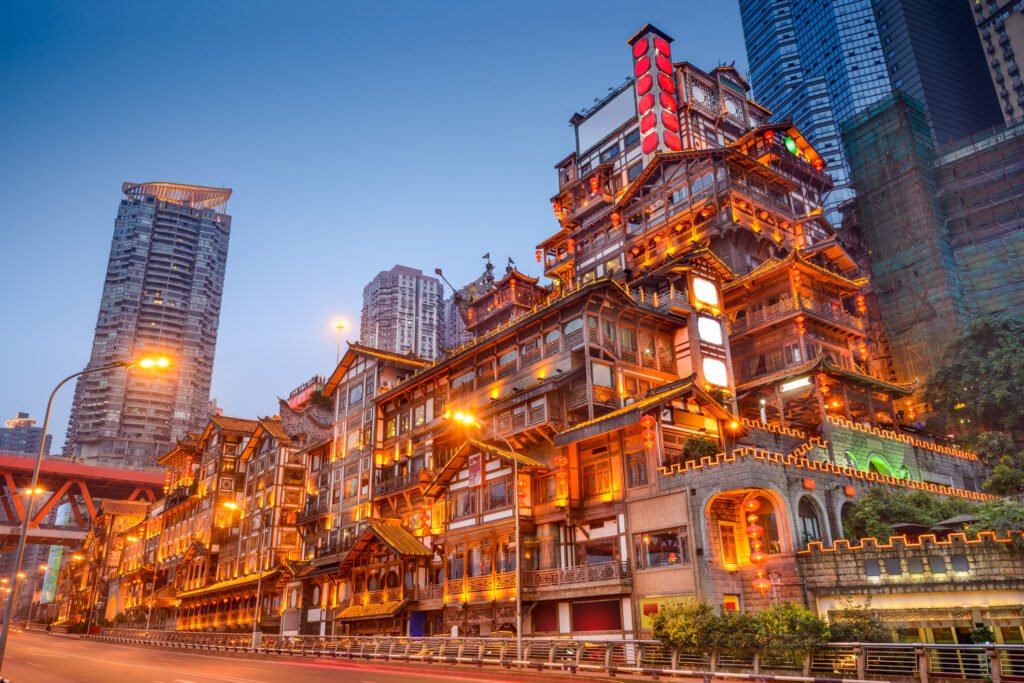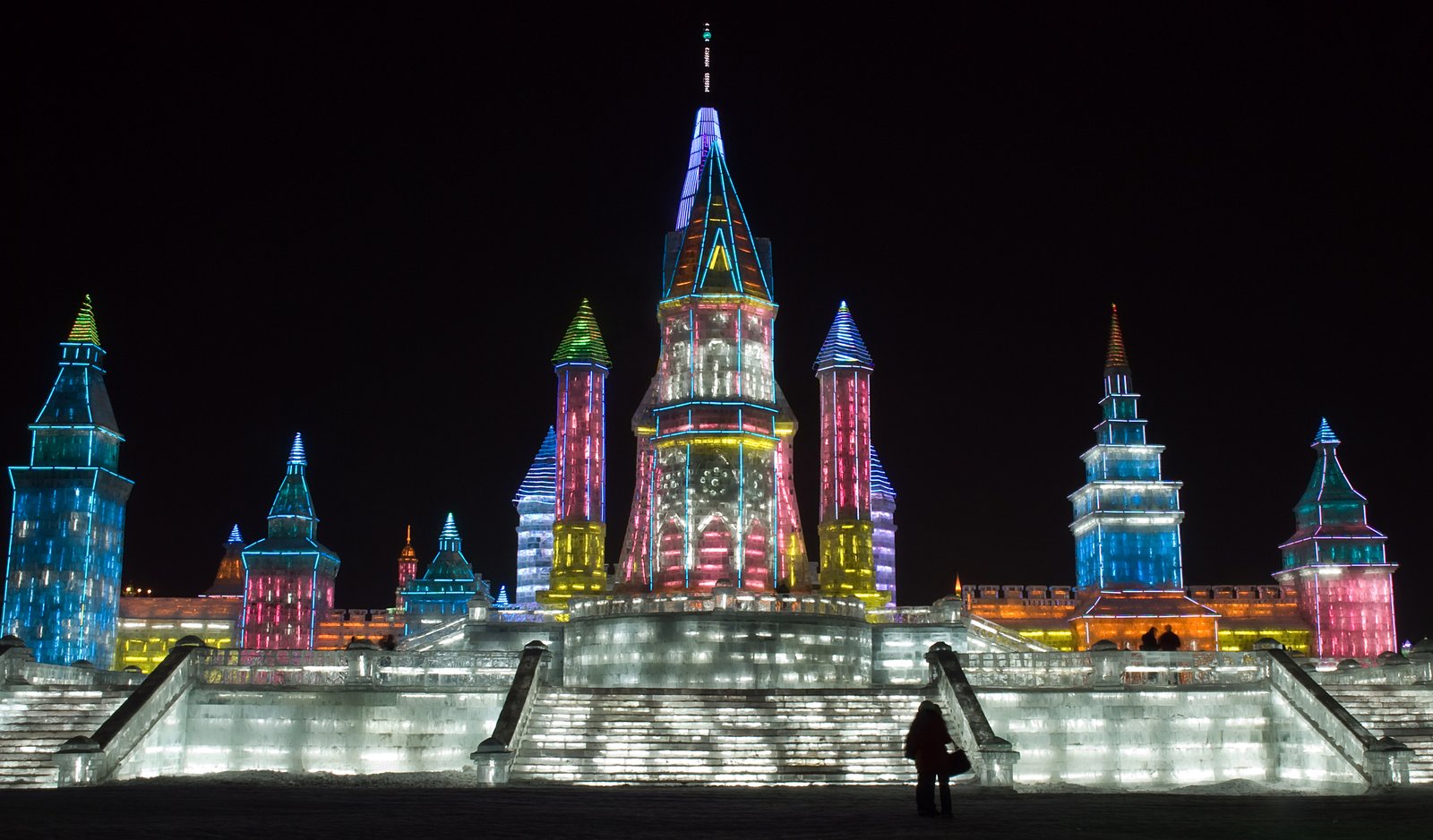
Chongqing, a sprawling metropolis perched at the confluence of the Yangtze and Jialing Rivers, is more than just a major industrial and commercial hub; it’s a culinary inferno that sets the senses ablaze. Often referred to as “Mountain City” due to its hilly terrain, Chongqing offers a gastronomic experience as intense and unforgettable as its landscape. Sizzling, spicy, and utterly addictive, Chongqing cuisine is a force to be reckoned with, cementing its place as one of China’s premier food destinations. Let’s embark on a journey to discover why Chongqing deserves its coveted spot among China’s top culinary havens, delve into its rich history, and uncover the gastronomic adventures that await within its bustling streets and steamy kitchens.
Why Chongqing Ignites as a Culinary Powerhouse
1. Sichuan Cuisine Amplified: While sharing roots with Sichuan cuisine, Chongqing takes the spice level to new heights. Its dishes are known for their bold use of chili peppers, Sichuan peppercorns, and fermented sauces, creating a fiery experience that’s not for the faint of heart.
2. Hot Pot Heaven: Chongqing is considered the birthplace of má là hot pot (麻辣火锅), a communal dining experience that is both a culinary art form and a social ritual. The city boasts countless hot pot restaurants, each offering its own unique broth base and selection of dipping ingredients.
3. Local Sichuan Peppercorn Prowess: While Sichuan peppercorn and chili peppers can be found through out Sichuan Province, Chongqing is the only area that fully embraces these ingredients to create a truly unique and flavorful dish.
4. Noodle Nirvana: The city offers an unparalleled variety of noodle dishes, from spicy Chongqing noodles to dandan noodles and suan la fen (sour and spicy glass noodles).
5. River City Bounty: Chongqing’s location along the Yangtze and Jialing Rivers provides access to fresh river fish and other aquatic ingredients, which are incorporated into various local dishes.
6. Street Food Culture: Chongqing’s street food scene is a vibrant and affordable showcase of the city’s culinary diversity, offering a seemingly endless array of snacks and small dishes.
7. Authenticity: Unlike other cities that may adapt Sichuan cuisine for wider appeal, Chongqing stays true to its bold and spicy roots, offering a truly authentic culinary experience.
8. Diverse Spice Markets: With the city being known for spice, it is no surprise there are a number of great spice markets throughout the region, bringing local merchants, farmers and customers together.
9. Innovative Chefs: Throughout Chongqing, there are many chefs who are creating new ways to deliver the same taste and flavor that Chongqing has become synonymous with.
Embark on a Culinary Adventure in Chongqing: A Guide for Daring Foodies

To truly experience the heat and flavor of Chongqing, you need to immerse yourself in its street food culture, embrace its spicy specialties, and explore its hidden culinary gems. Here’s a guide to some unforgettable food adventures:
1. Hot Pot Pilgrimage: Dive into the heart of Chongqing’s food culture by embarking on a hot pot pilgrimage. Explore different neighborhoods and try various hot pot restaurants, each offering its unique broth base and selection of dipping ingredients. Be sure to try the classic má là (numbing and spicy) broth.
2. Noodle Nirvana Quest: Embark on a noodle-tasting adventure, sampling the city’s diverse range of noodle dishes. From spicy Chongqing noodles to dan dan noodles and suan la fen, each bowl offers a unique flavor experience.
3. Street Food Safari in Ciqikou Ancient Town: Explore the historic streets of Ciqikou Ancient Town, a charming district filled with street food vendors selling local snacks like chili chicken, potato pancakes, and tang you guozi (glutinous rice balls coated in brown sugar).
4. Spice Market Exploration: Immerse yourself in the aromas and colors of Chongqing’s spice markets. Learn about the different types of chili peppers, Sichuan peppercorns, and other spices that define Chongqing cuisine. Purchase ingredients to bring home and recreate your favorite dishes.
5. Cooking Class Immersion: Deepen your understanding of Chongqing cuisine by taking a hands-on cooking class. Learn to prepare classic dishes like mapo tofu and Chongqing noodles under the guidance of a local chef.
6. Yangtze River Seafood Feast: Savor the fresh flavors of the Yangtze River by dining at a restaurant specializing in river fish and seafood. Try dishes featuring local catches like the Yangtze River knife fish or the three-fresh soup.
7. Rooftop dining: Explore Chongqing’s rooftop restaurants, offering views of the city and amazing food options.
A Taste of History: Tracing Chongqing’s Culinary Evolution

Chongqing’s culinary history is as fiery and dynamic as its topography. Its cuisine has been shaped by its mountainous environment, its role as a major trading port, and its close relationship with Sichuan province.
* Early Influences: The foundations of Chongqing cuisine were laid by the indigenous Ba people, who inhabited the region for centuries. They developed a unique style of cooking that emphasized local ingredients and bold flavors.
* Spice Trade Boom: The arrival of chili peppers in China during the Ming Dynasty (1368-1644) revolutionized Chongqing cuisine. These fiery peppers, along with Sichuan peppercorns, became signature ingredients, defining the region’s unique flavor profile.
* The Rise of Hot Pot: Hot pot emerged as a popular dining experience. Its origins can be traced to boatmen along the Yangtze River who cooked simple stews using readily available ingredients.
* Independent Municipality: In 1997, Chongqing became a directly administered municipality, giving it greater autonomy and resources to develop its economy and culture. This also paved the way for a new culinary renaissance, as the city’s chefs began to experiment with new ingredients and techniques while maintaining a deep respect for tradition.
10 Iconic Recipes That Define Chongqing’s Culinary Landscape
1. Chongqing Hot Pot (重庆火锅): This communal dining experience features a simmering pot of spicy and numbing broth, in which diners cook various meats, vegetables, and noodles. The broth is typically made with beef tallow, chili peppers, Sichuan peppercorns, and fermented bean paste.
2. Chongqing Noodles (重庆小面): These simple yet flavorful noodles are a staple of Chongqing street food. They are typically served in a spicy sauce made from chili oil, soy sauce, vinegar, and Sichuan peppercorns, topped with peanuts, scallions, and preserved vegetables.
3. La Zi Ji (辣子鸡): Stir-fried dry red chili chicken dish.
4. Suan La Fen (酸辣粉): Sour and spicy glass noodles.
5. Quanshui Chicken: Made with a spicy chili sauce.
6. Mapo Tofu (麻婆豆腐): Cubes of fresh tofu, cooked in a spicy mixture of ground beef.
7. Gan Bian Wan Dou (干煸豌豆): A spicy green bean side.
8. Dandan Noodles (担担面): Dry noodles topped with sauce, bean sprouts, and more.
9. Sichuan Chicken: There are many chicken recipes to be found in the Sichuan region.
10. Fermented Vegetables: The unique method in which vegetables are fermented for extra spice.
A City That Delivers
Chongqing’s cuisine is more than food—it’s a testament to resilience, creativity, and community. From the communal joy of hot pot to the humble perfection of a noodle bowl, every dish tells a story of a city shaped by rivers, mountains, and fire. Whether you’re braving the heat of la zi ji or savoring the tang of suan la fen, Chongqing invites you to embrace the mala madness. Come hungry, leave exhilarated—and forever haunted by the memory of its bold, unforgettable flavors.
So, pack your appetite (and a stomach-soothing tea), and let Chongqing’s culinary inferno ignite your passion for real Sichuan cooking. Your taste buds will thank you—after they stop tingling.


